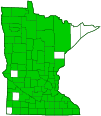American lopseed
(Phryma leptostachya)
Conservation • Wetland • Description • Habitat • Ecology • Use • Distribution • Taxonomy
Description |
American lopseed is a 12″ to 36″ tall, erect, perennial forb that rises from a somewhat fleshy, brownish root. The stems are erect, 4-angled, jointed, and unbranched or sparingly branched. They are light green to dark purple, with a dark purple, swollen area above each node. The lower part of the stem is covered with short, soft, straight hairs, the upper portion with long, soft, straight hairs, especially at the nodes. The leaves are opposite, egg-shaped, asymmetrical, 1 3 ⁄16″ to 4″ long, and ⅝″ to 2″ wide. Lower leaves are abruptly narrowed at the base with the blade continuing down along both sides of the leaf stalk to form a minute wing. They are on leaf stalks that are up to 1⅜″ long. The lowest leaves on the stem are smaller and are broadly egg-shaped. The upper and lower surfaces are rough to the touch due to a sparse covering of short, straight, stiff hairs. The margins are coarsely toothed. The leaf stalks become gradually shorter as they ascend the stem. Upper leaves are on leaf stalks that are 1 ⁄16″ to ⅛″ long. The uppermost leaves may be stalkless. The inflorescence is a spike-like raceme at the end of the stem and branches and also from upper leaf axils. The racemes are 6″ to 13¾″ long. The central axis of the raceme (rachis) is dark purple and rough with firm, stiff hairs. Flowers appear on the rachis in opposite pairs. Flower buds are held erect. When in bloom the flowers are held horizontally. Each flower is about ⅓″ and about ¼″ wide. At the base of the flower are 3 small awl-shaped bracts. There are 4 green sepals united at the base into a 1 ⁄16″ long calyx tube, then separated into 3 long, linear, purple, upper teeth and 2 much smaller lower teeth. There are 4 pale purple or pink to white petals united into a tube at the base then separated at the tip into 2 lips. The upper lip is small, straight, rounded, and notched at the tip. The lower lip is much longer, spreading, and 3-lobed. There are 2 long and 2 short pairs of stamens that do not extend beyond the corolla. The filaments are white and the anthers are pale yellow. There is a white style that does not protrude from the corolla. The stigma has 2 plate-like structures (lamellas) with sensitive inner surfaces that close together on contact with a pollinator. After blooming the corolla drops off and the developing fruit bends downward, pressed tightly to the stalk, within the elongated, persistent calyx. The fruit is a single achene with a hooked tip. |
Height |
12″ to 36″ |
Flower Color |
Pale purple or pink to white |
Similar Species |
Habitat |
Moist. Woods, forests. |
Ecology |
Flowering |
July to August |
Pests and Diseases |
|
Use |
|
Distribution |
||
|
Sources Biodiversity occurrence data published by: Minnesota Biodiversity Atlas (accessed through the Minnesota Biodiversity Atlas Portal, bellatlas.umn.edu, 6/9/2025). |
|
| 6/9/2025 | ||
Nativity |
||
Native |
||
Occurrence |
||
Common |
||
Taxonomy |
|
Kingdom |
|
Division |
Tracheophyta (Vascular Plants) |
Subdivision |
Spermatophytina (Seed Plants) |
Class |
|
Order |
Lamiales (Mints, Plantains, Olives, and Allies) |
Family |
Phrymaceae (lopseed) |
Genus |
Phryma |
Subordinate Taxa |
|
|
|
Synonyms |
|
Phryma leptostachya var. asiatica Phryma leptostachya var. confertifolia Phryma media Phryma parvifiora Phryma pubescens |
|
Common Names |
|
American lop-seed American lopseed lopseed |
|
Glossary
Achene
A dry, one-chambered, single-seeded seed capsule, formed from a single carpel, with the seed attached to the membranous outer layer (wall) only by the seed stalk; the wall, formed entirely from the wall of the superior ovary, does not split open at maturity, but relies on decay or predation to release the contents.
Calyx
The group of outer floral leaves (sepals) below the petals, occasionally forming a tube.
Corolla
A collective name for all of the petals of a flower.
Linear
Long, straight, and narrow, with more or less parallel sides, like a blade of grass.
Node
The small swelling of the stem from which one or more leaves, branches, or buds originate.
Raceme
An unbranched, elongated inflorescence with stalked flowers. The flowers mature from the bottom up.
Sepal
An outer floral leaf, usually green but sometimes colored, at the base of a flower.
Visitor Photos |
||
Share your photo of this plant. |
||
This button not working for you? |
||
Kirk Neslon |
||
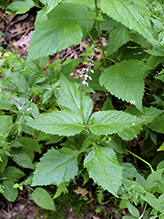 |
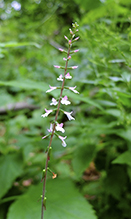 |
|
Plant |
Flowers |
|
MinnesotaSeasons.com Photos |
||
 |
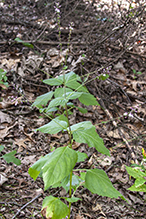
|
|
Plant |
||
|
||
|
||
|
Plant | |
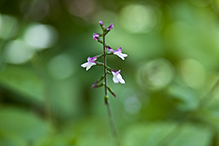 |
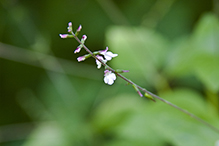 |
|
Inflorescence |
Inflorescence |
|
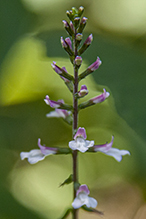 |
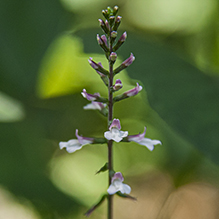 |
|
Inflorescence |
Inflorescence |
|
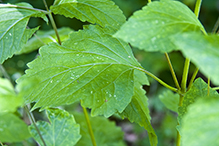 |
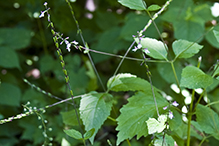 |
|
Leaves |
Infructescence |
|
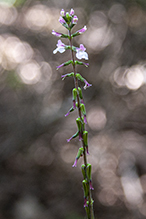 |
||
Infructescence |
|

Visitor Videos |
||
Share your video of this plant. |
||
This button not working for you? |
||
|
Other Videos |
||
Hello, Phryma! |
About
Aug 19, 2020 Phryma leptostachya, lopseed, ハエドクソウ (haedo-kusoo) |

Visitor Sightings |
||
Report a sighting of this plant. |
||
This button not working for you? |
||
| Kirk Nelson 7/4/2016 |
Location: Lebanon Hills Regional Park |
 |
MinnesotaSeasons.com Sightings |
||

|
Created: 1/12/2010 Last Updated: © MinnesotaSeasons.com. All rights reserved. |
